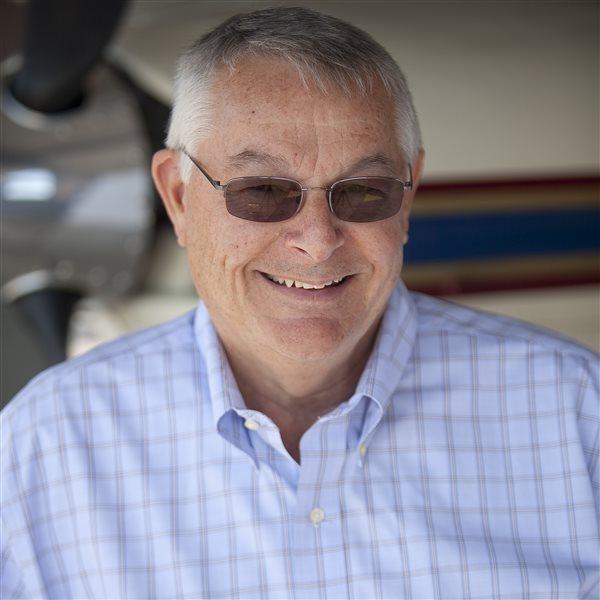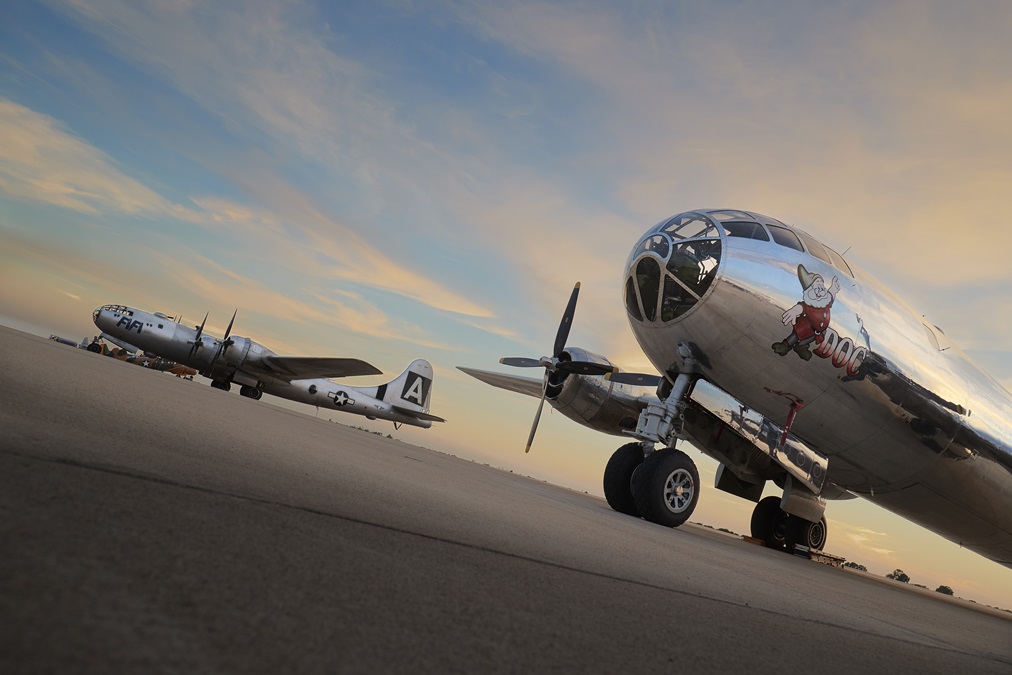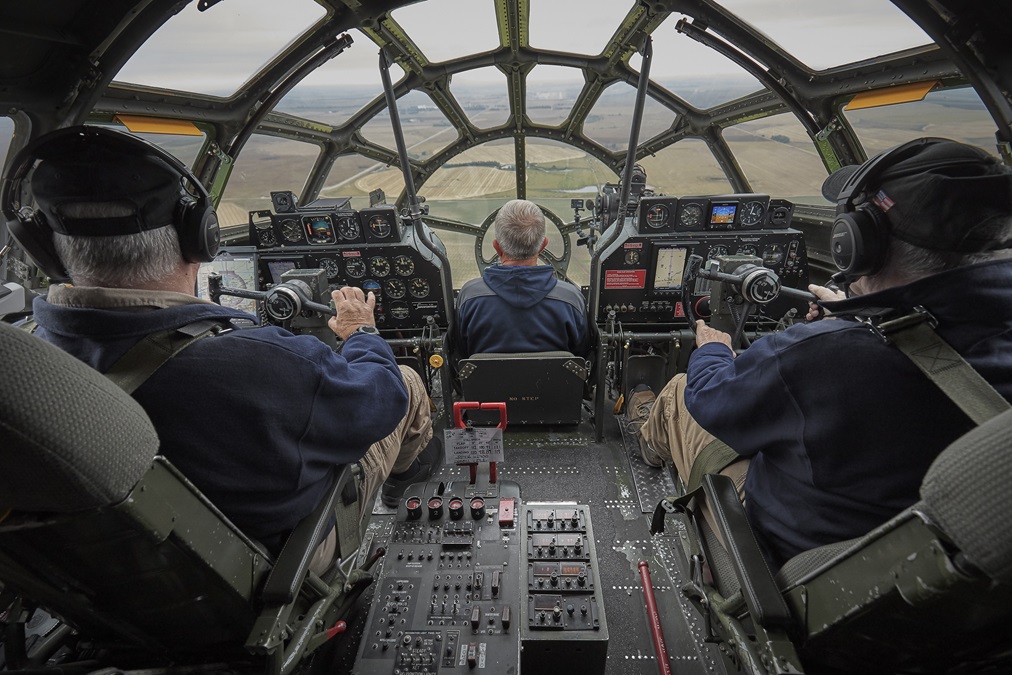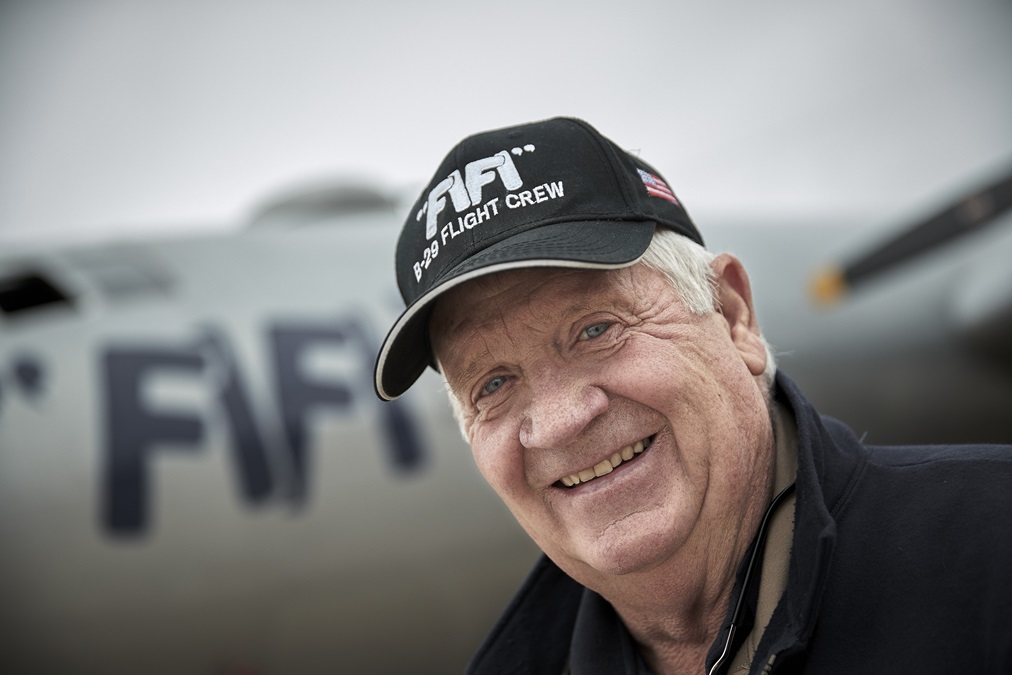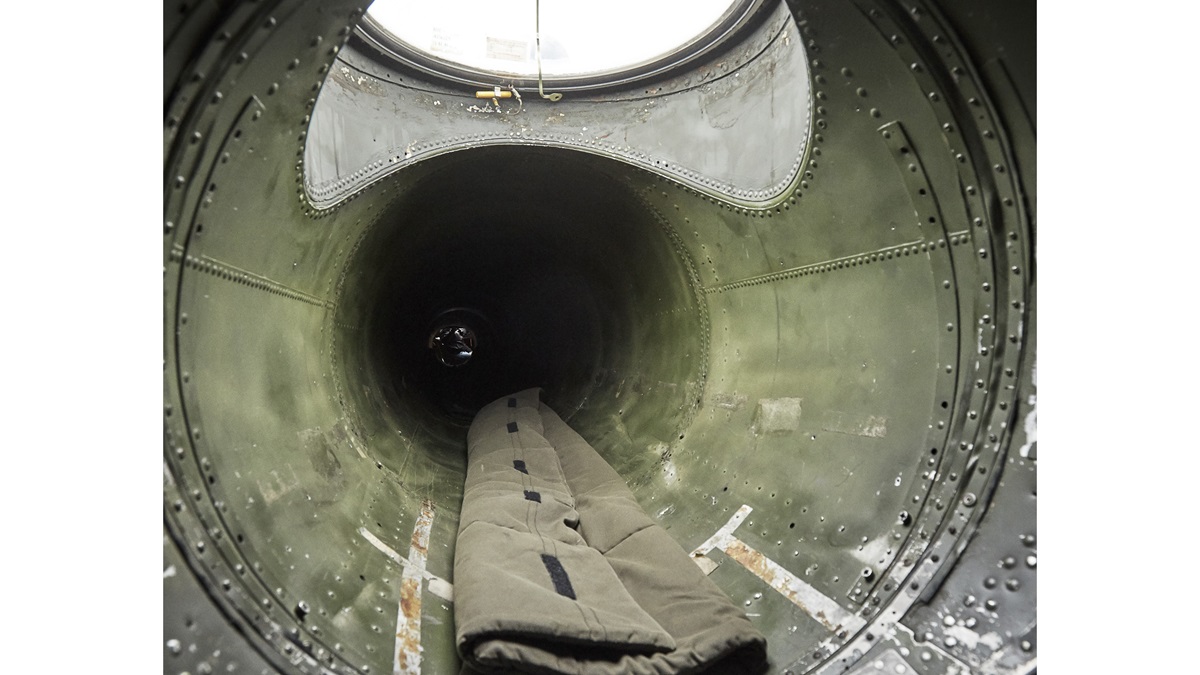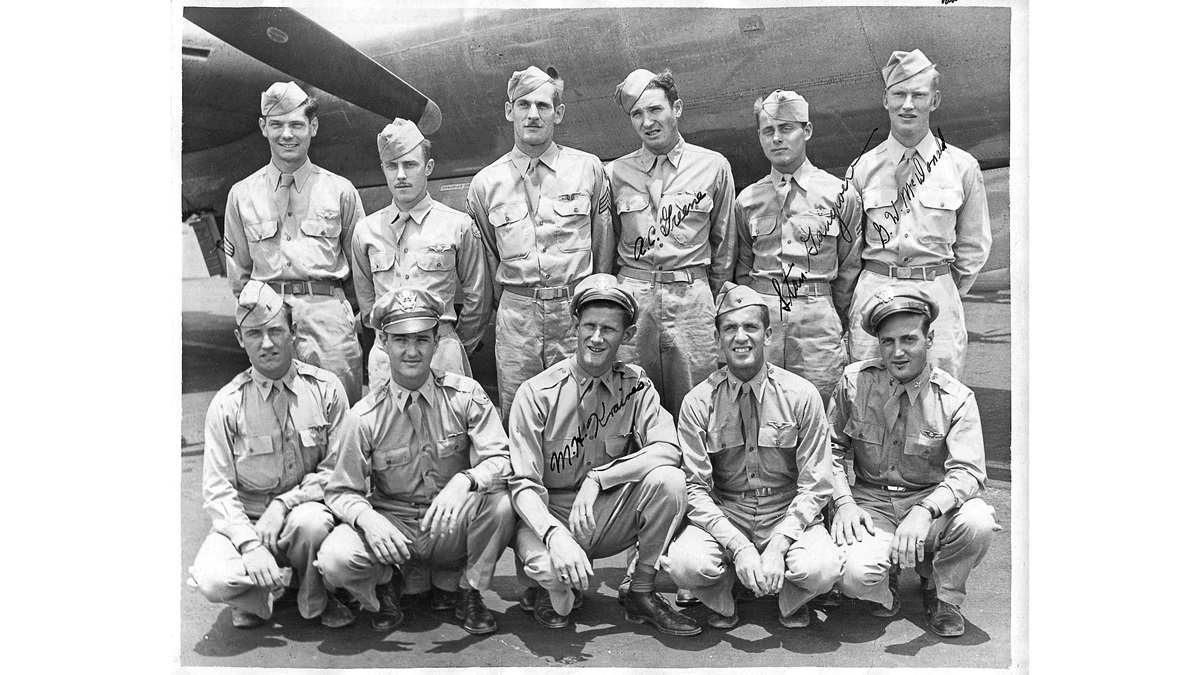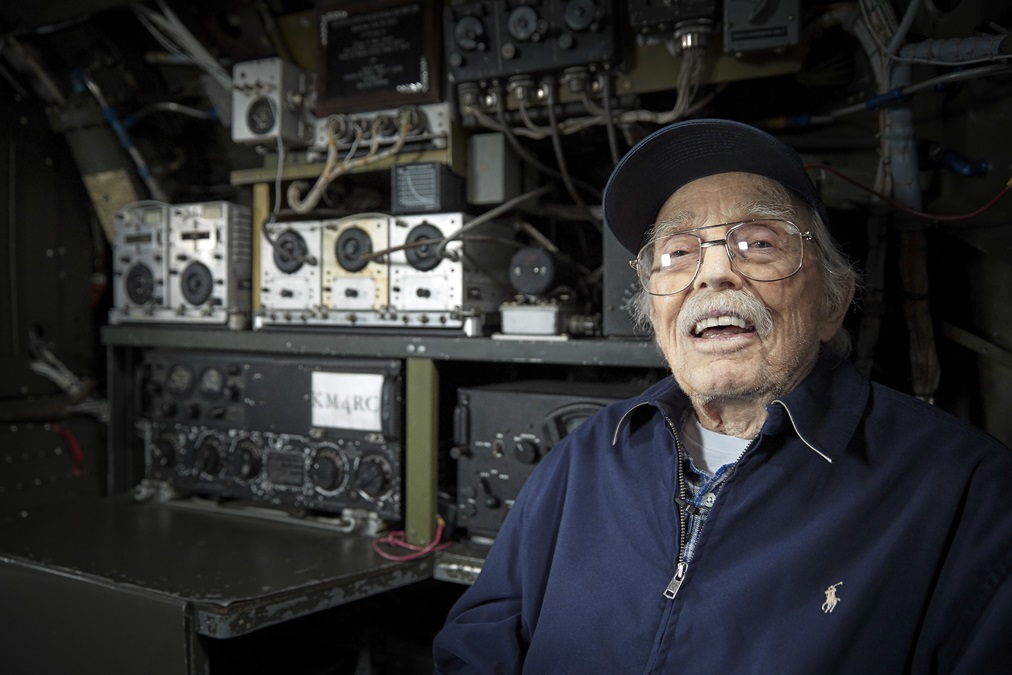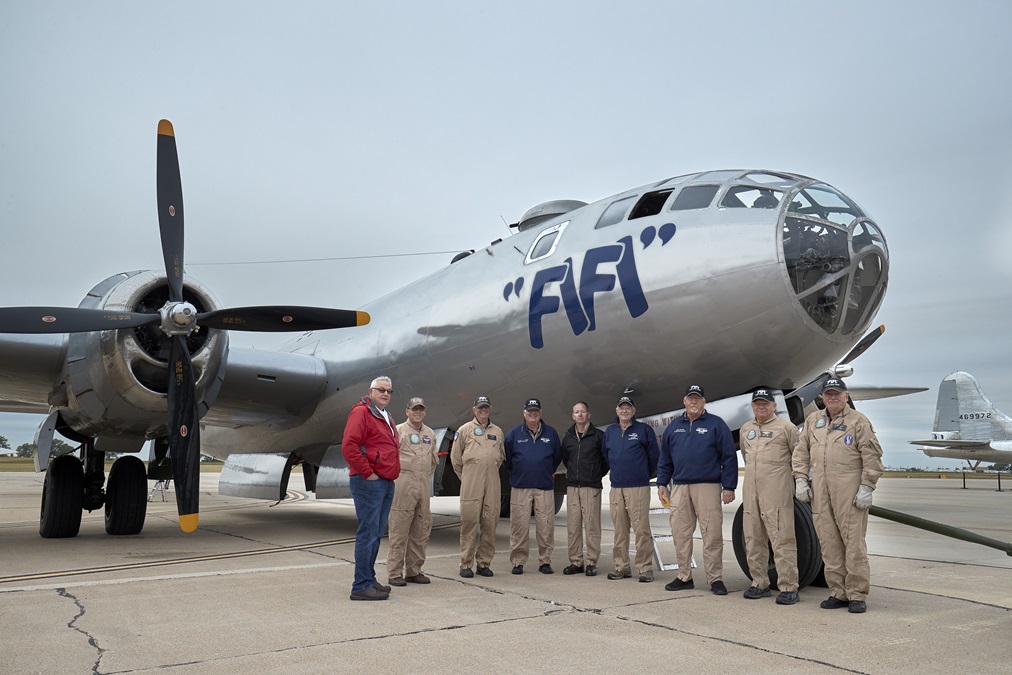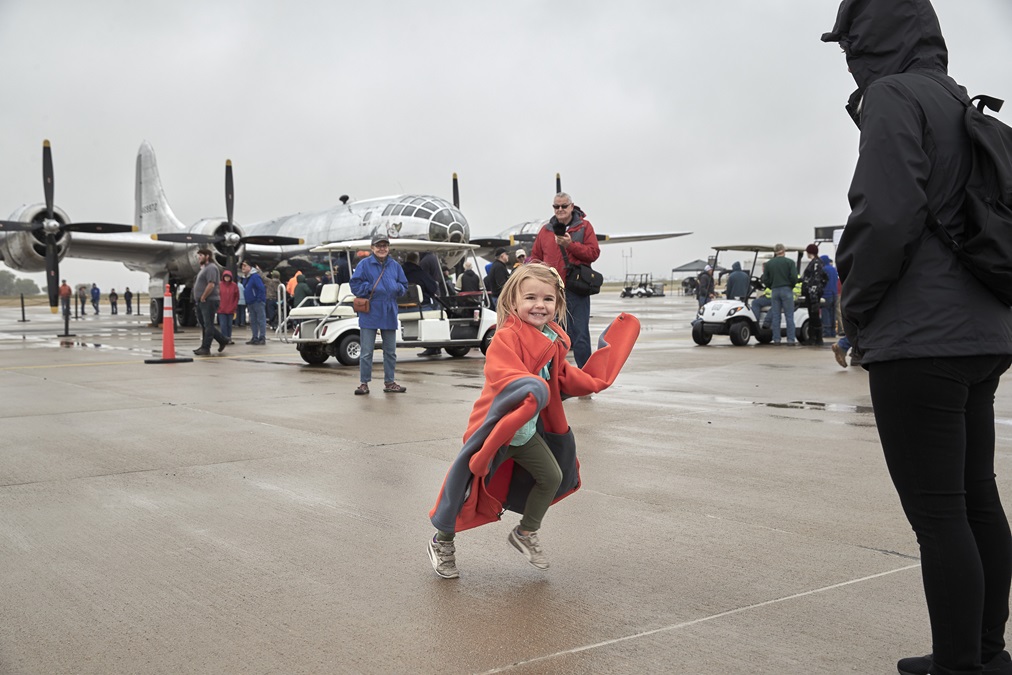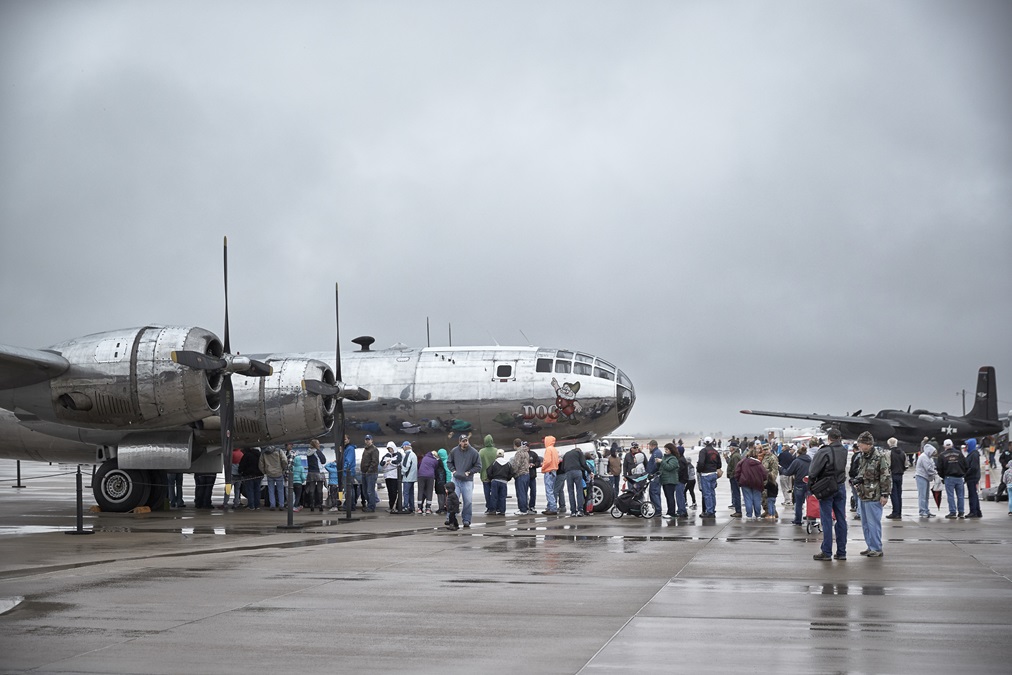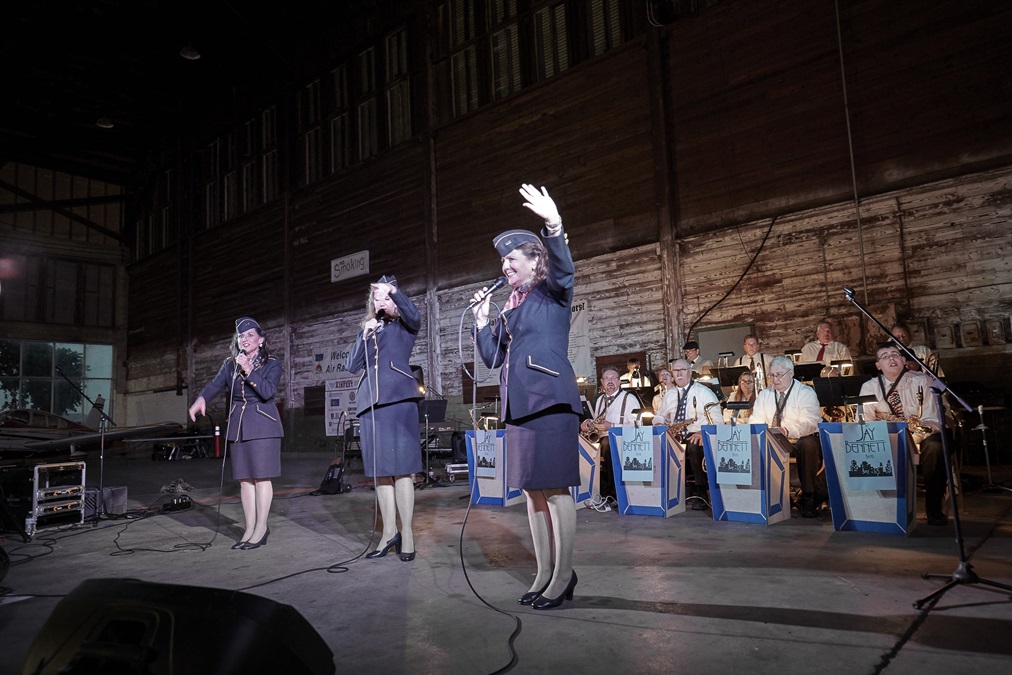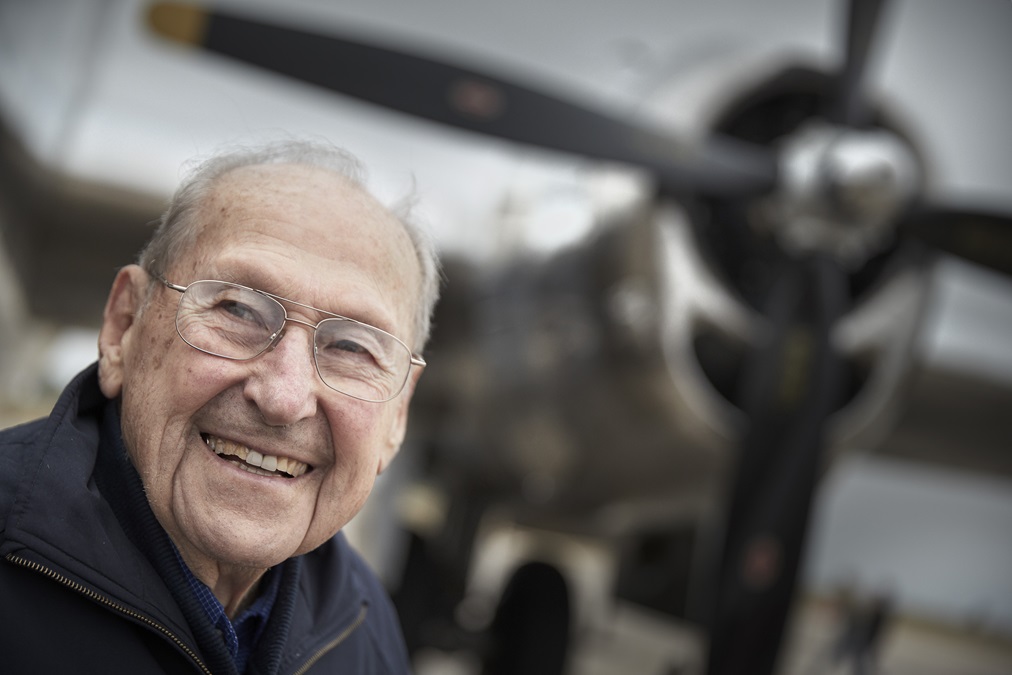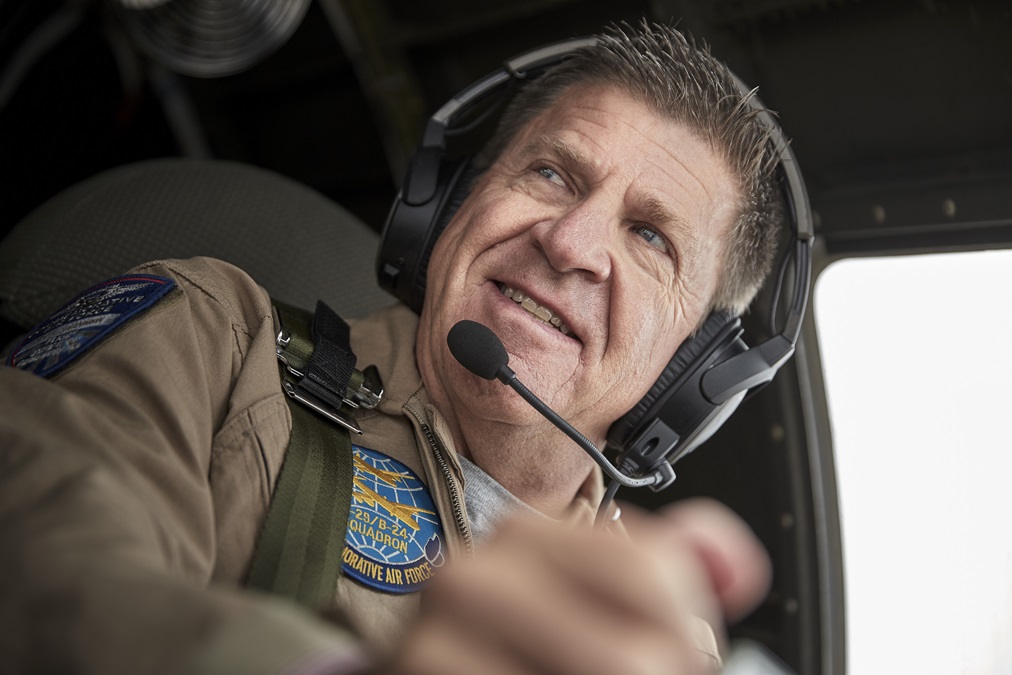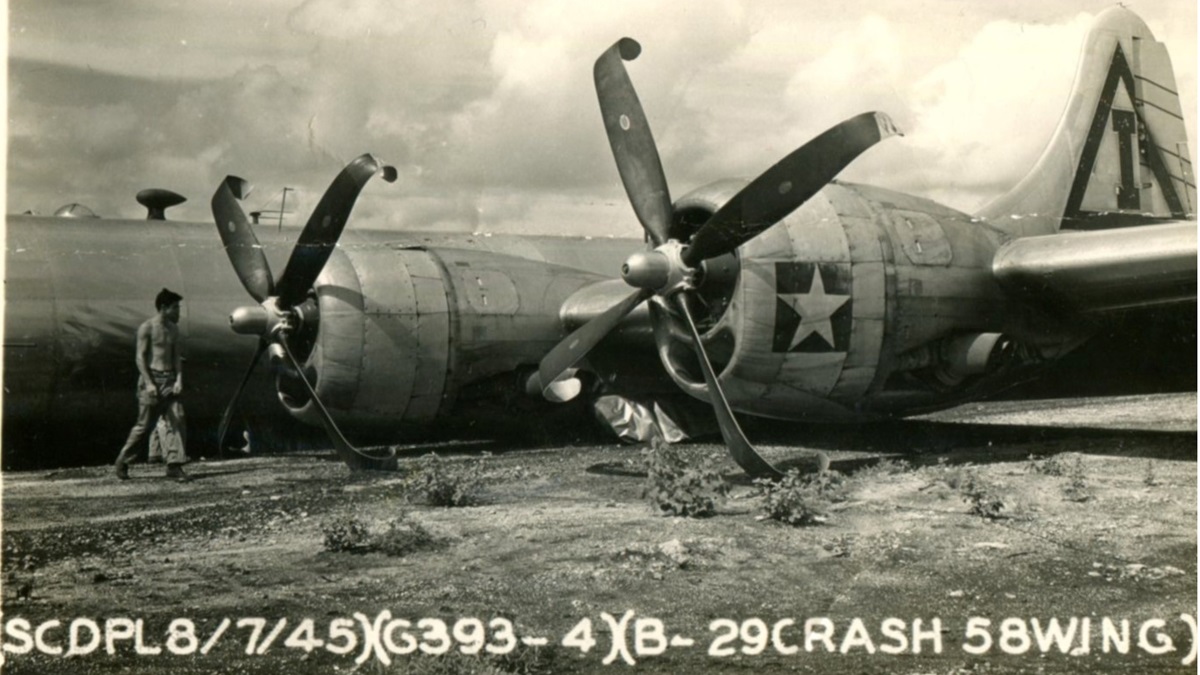Memories from the Super Fortress
Hidden stories of the B–29
Once all are aboard, this late-September mission will move the Commemorative Air Force (CAF) B–29 Fifi from Joplin, Missouri, where it was barnstorming, to the Great Bend (Kansas) Airfest, located a two-hour drive northwest of Wichita. There, the public will use a real, recognizable ladder that lies secured in the forward bomb bay. This luxury was not available to the original crews.
The B–29 was the best we had, tested above Seattle by Paul Tibbets, who would later drop the atomic bomb on Hiroshima: pressurized, guns fired remotely by a crude computer, speedy, able to cruise above 30,000 feet.
Engine start awakes 72 cylinders that grumble to life like soldiers stumbling from a deep sleep; two cylinders cough at one time joined then by three more, white smoke spewing from the exhausts. A fire truck is stationed at the nose. Once the cylinders get organized, the sputtering is replaced by a throaty, smooth roar. At the right-scanner position in back—formerly a right-gunner position—is a Fifi crew member with a special connection to the B–29.
Ray Owens and Dan Godsy grew up together in Oklahoma. Both went into the Army Air Forces, with Owens becoming a mechanic working in Texas on B–26 bombers while Godsy became a B–29 co-pilot. Godsy went to the Pacific around Christmas 1944 to Tinian Island with the 505th Bomb Group. On the first mission, the unit commander wanted Godsy’s seat to observe the mission, so Godsy stayed behind. Since airmen went home after 35 missions, that put him one mission behind his crew. His opportunity to catch up came February 10, 1945, on a mission to bomb the Nakajima aircraft factory at Ota, Japan, northwest of Tokyo. Right before they released their bombs, a Japanese fighter, out of control after being shot by a B–29, careened through the B–29 formation. It struck Godsy’s bomber, Slick’s Chicks, head-on, causing the tail of that bomber to hit the number-four engine of a second B–29, Deaner Boy. Both aircraft were lost along with 23 onboard. Owens named his son Dan after Dan Godsy.
Dan Owens, the right scanner, started crewing aboard Fifi in 2011. A Bonanza F33 owner, he operates an electrical contracting company serving the oil and gas drilling industry in several states. His wife thinks he has become obsessed by a need to research the story of Dan Godsy, his namesake. He has traveled to B–29 bases on Guam, Saipan, and Tinian Island with other CAF members, and has visited a memorial at Ora, Japan, to the 23 men lost.
The CAF bases Fifi in Fort Worth, Texas; Doc, the only other flying B–29, will soon have a new home at Wichita’s Dwight D. Eisenhower National Airport. The two rare aircraft have flown together only twice since the nonprofit Doc’s Friends returned Doc to flying status in July 2016.
During tight formation flights with Doc, Fifi is commanded by Jeff Linebaugh of the CAF. Like Owens, he also has a connection to B–29s during World War II.
“For me it’s a special privilege,” Linebaugh said. “My dad was a [Boeing] B–17 pilot at the end of World War II. He was slated to go to B–29 school in September of 1945. Of course, the war ended. He never went to B–29 school. I feel like I got to take my dad’s place and go into the B–29.”
“The flight engineer said, ‘Not with me onboard you’re not,’ and cut off the remaining engines.” —Vince Van Velzer, radio operator, Boeing B–29Fifi is first to arrive in Great Bend, followed a few hours later by Doc. Winds cancel the Friday afternoon airshow, at least for the B–29s; they are old and the pilots like to baby them. Friday morning is calm enough, and Fifi makes a flight with paying passengers. Schoolchildren watch the takeoff and landing, chanting “Fi-fi, Fi-fi, Fi-fi.” As the massive aircraft lifts into the sky a little girl hugs a friend in celebration. At the airshow, warbirds are on display and a 1940s dance is set for Saturday night with an act recalling the Andrews Sisters from the boogie-woogie era. A few Kansans will attend in 1940s costumes.
Low clouds spitting mist arrive Saturday aboard gusting cold winds, canceling both the morning and afternoon airshows. It’s the day B–29 radio operator Vince Van Velzer and B–29 navigator instructor Eli Boucher will arrive to reunite with their past. Both are 97.
Van Velzer, who once rode Indian motorcycles and drove a fast sports car, arrives aboard a golf cart with sons Bill and Mike and is parked under the wing of Fifi to stay out of the rain. Velzer insists he is going into the cockpit to sit once again at his radio desk. It seems like a bad idea. The daunting vertical steps are the only way in. The two sons look at the steps and devise a plan, one person to push from below and one to pull from above. Van Velzer is halfway up before most realize he has started. There’s just one last step—too high above the ground for anyone to help.
“It’s all you, Dad,” says Mike. Van Velzer finds the strength, makes that last step, and is helped across the open hatch by son Bill and the CAF’s Linebaugh. Reaching the radio operator’s desk, his delight is obvious. The radios are the same as the ones he used. Van Velzer became a civilian pilot before he joined the Army, but the Army told him he was too short. Instead, the Army used his ham radio skills on the B–29.
“I preset my frequencies on the ground,” he says, twisting the dials. He pats the desk. “My Morse code key was here for long-distance communication.” He turns toward a radio to the right. “This was a good receiver,” he adds, twisting the dials the way he was taught. He recalls the time his bomber Miss Lead belly-landed on Tinian Island after the typical 15-hour mission to Japan and back.
Departing Japan, the pilot and flight engineer thought there was enough fuel to return to West Field at Tinian Island. The crew overflew the emergency fuel stop at Iwo Jima. When the number four engine cut off later because of fuel starvation, aircraft commander Maury Kraines told the crew to throw excess equipment out and prepare for ditching. Not wanting to see it go overboard, Van Velzer grabbed his standard-issue Colt .45-caliber pistol off the radio operator’s table and hid it in his jacket. “I thought I might need it.” He sent a message to headquarters by Morse code about the possible ditching. It was obvious they weren’t going to make it to their home base at West Field on Tinian, so they planned on landing at Tinian’s North Field, from which the Enola Gay was to later depart on its atomic-bomb mission. North Field wasn’t spotted until the bomber was right above it, but unfortunately still at 10,000 feet. They had approached from the west but would land to the east, requiring a turn. Kraines banked sharply, dropping steeply toward Runway Alpha. The action unported the fuel tank to the number three engine and it quit. The aircraft was too high and too fast, floating past the mid-point of the runway, when Kraines ordered a go-around for another try. The flight engineer knew if they went around, it would take four more turns around the rectangular traffic pattern, unporting fuel from engines one and two. There was only 50 gallons in each of three tanks. Flight engineer Sgt. Leonard Brewer said, “Not with me onboard you’re not,” and cut off the two remaining engines, Van Velzer recalled. The B–29 was now a glider. Van Velzer and other crew members had previously placed seat cushions and jackets behind their backs, and had moved to bulkheads where they sat facing the tail. If there was a sudden stop, a term Van Velzer uses for the crash to come, they would be pushed hard against the bulkheads. The sudden stop they feared never occurred. Miss Lead landed on the mains and blew the tires before the gear folded. The accident report found by son Bill Van Velzer sums it up in all caps: “Number three (3) cut out on turn to final approach, and number one (1) and two (2) cut out on steep approach to field with gear and flaps down.” The report doesn’t say anything about the drama in the cockpit.
After the war, Van Velzer had a successful career as an aerospace engineer, ending up helping to build the Air Force C–17 transport. He purchased a Piper Cherokee 180 and, along with his late wife, Mary, who also became a pilot and headed a Ninety-Nines chapter, flew many long trips out of California.
Once Van Velzer sits in the pilot’s seat and is ready to leave, the “real” ladder is retrieved from the bomb bay wall and attached to the cockpit hatch.
Two hours later Eli Boucher, 97, arrives for a visit with Doc. Boucher, a teacher in civilian life, was a sergeant in World War II charged with teaching physics and math to B–29 navigators so they could better understand their new navigation system. He was introduced to each new class of officers by a captain who said, “He’s only a sergeant but you better damn well listen to him if you want to come home.”
Like Van Velzer, Boucher wanted to fly, but as soon as he told the recruiter about his high-school football knee injury, his dream ended. Boucher has believed for years that he wasn’t a real veteran because he didn’t go overseas. After the thanks he received from Doc’s crew at the Great Bend Airfest, Boucher has now decided that yes, he did contribute to the war effort. Crews came home because of him. Later, both Boucher and Van Velzer are honored at an airshow ceremony, bringing tears to the eyes of Great Bend Airport Manager Martin Miller.
The final day of the airshow brings a patch of good weather that lasts long enough for Fifi and Doc to fly together, accompanied by other warbirds. They show the children in the crowd what it looked and sounded like when Boucher and Van Velzer were young.
